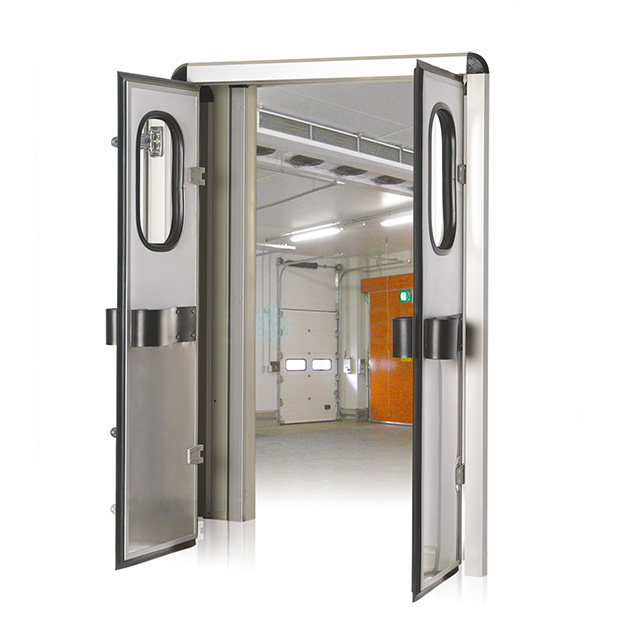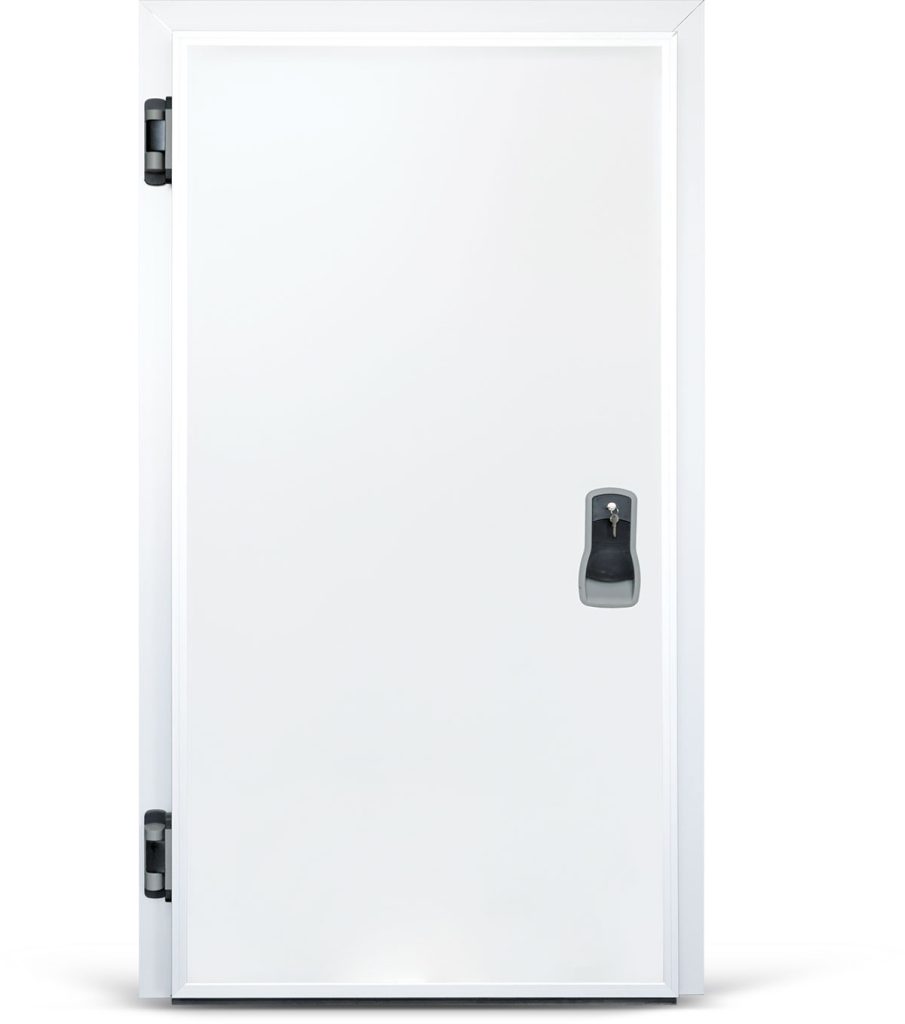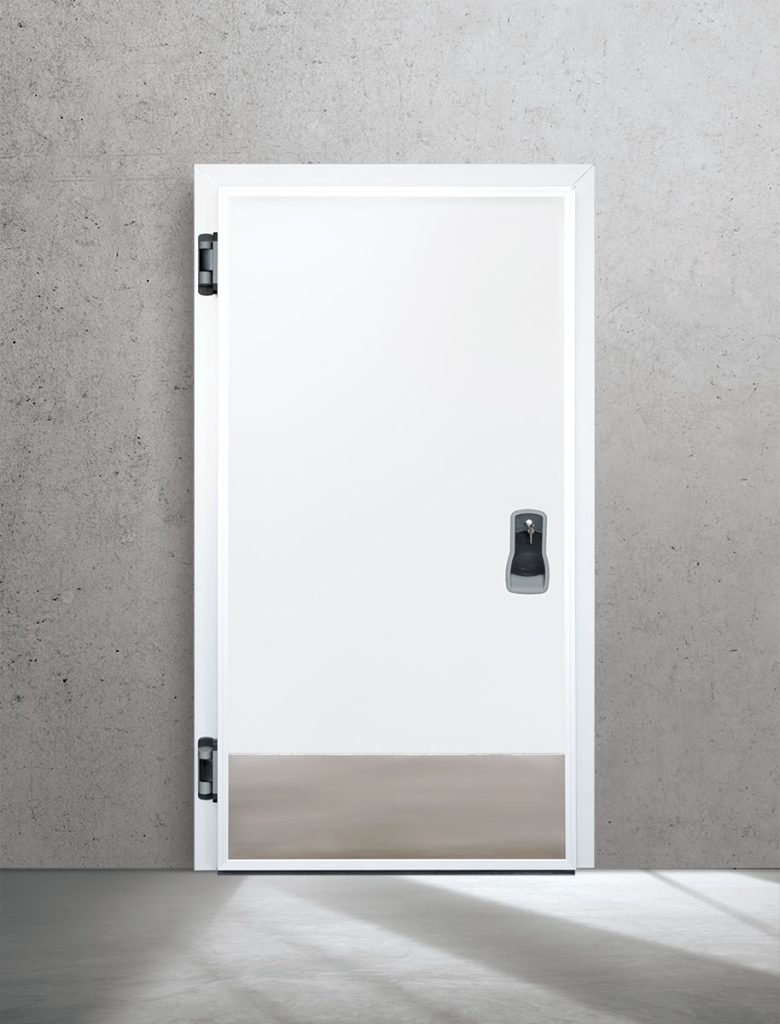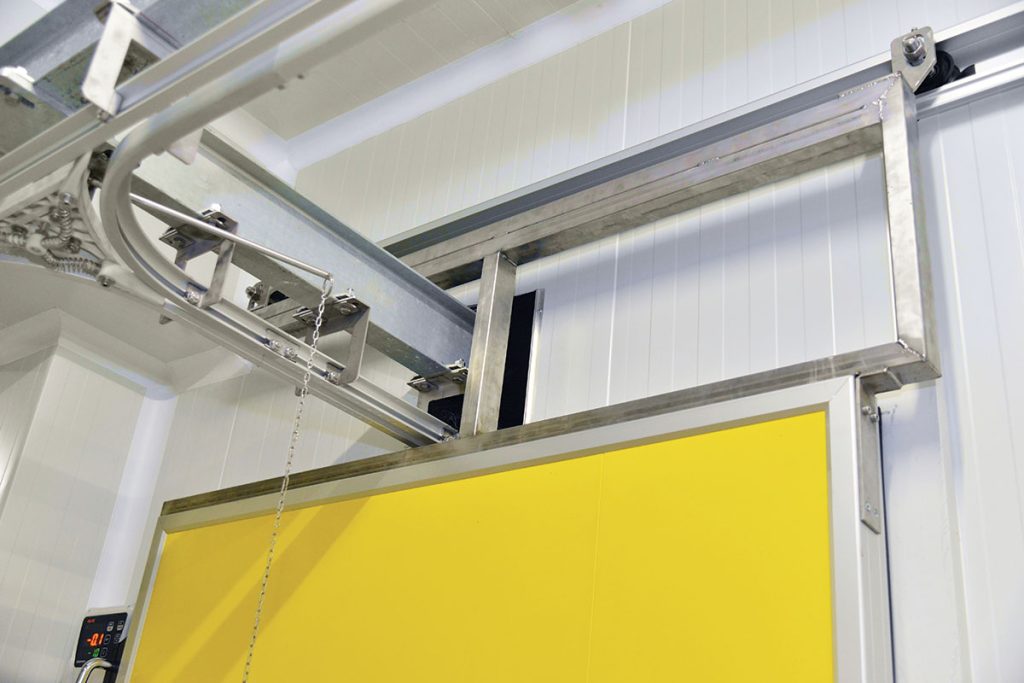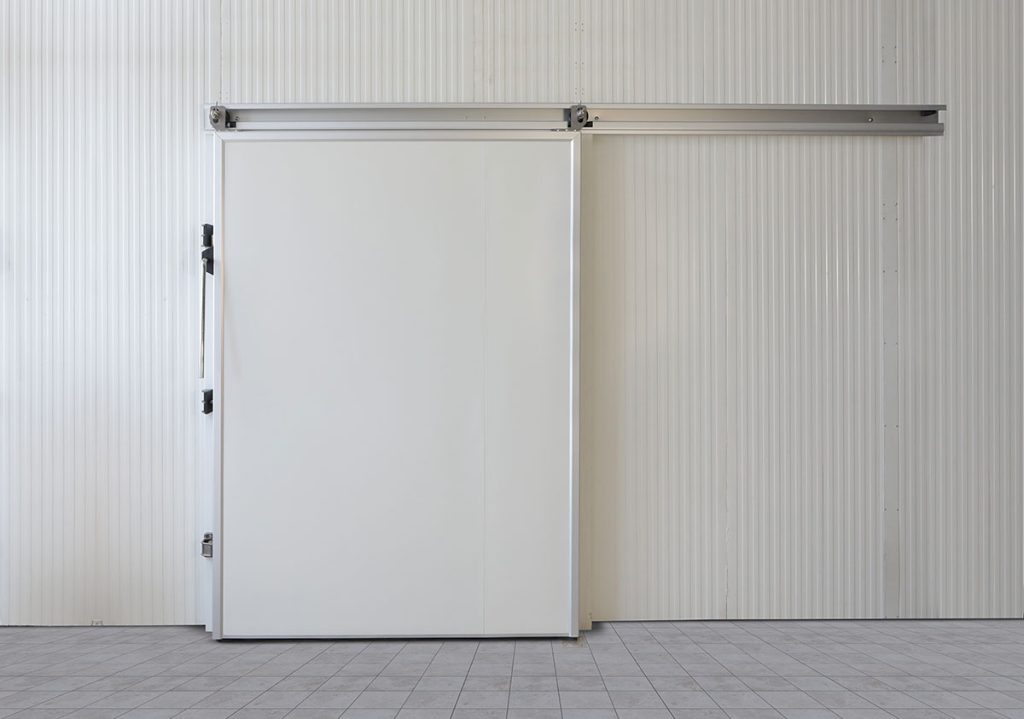Cold Room Doors are the most important element of cold storages and refrigerated rooms. Typically, cooling doors are selected in a wide variety of types and sizes, even in the process of structural design of cold rooms.
Doors for Cold Rooms
The main purpose of doors for cold rooms is the thermal insulation of the door through which products are loaded and unloaded. Doors must withstand the temperature conditions and workload in refrigerated rooms; Therefore, when choosing doors, it is important to choose the right door type and its technical characteristics: size, insulation thickness, etc.
Door Types for Cold Storages
Depending on the operating conditions and when performing loading and unloading operations in cold rooms and warehouses, the following are used:
Hinged Doors (swinging),
Sliding Doors,
Vertical Doors (guillotine type doors).

